Calibrating a Microsoft Surface Pro 3
(The initial version of this page was the first draft of a post that I used to start a thread on the Luminous Landscape Colour Management forum. I have updated the text in this article to reflect things I have learned on the thread. This article is a work in progress and will be updated/corrected as I learn more.)
I calibrated my new Microsoft Surface Pro 3. Other than one niggling glitch (Fixed! With the July 8 2014 Windows Update.) I like it a lot. The gamut is very close to sRGB.
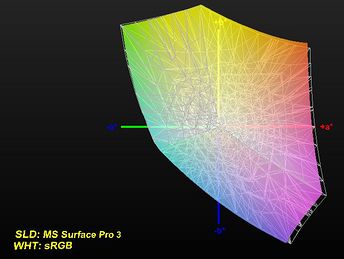
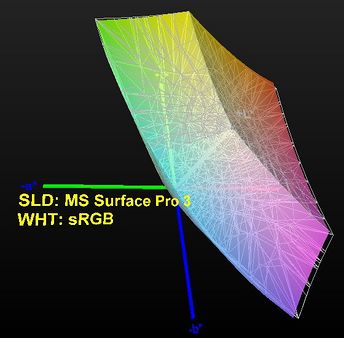
(3-D version )
But...as profiled, it doesn't look like my NEC PA241W running in sRGB emulation mode. Neutrals on the Surface are mostly neutal but some hues have a greenish tint. And there isn't enough red saturation. I felt that I need to resolve the difference in appearance between the two monitors before I can do any serious image editing on the Surface. (The Surface runs CC Photoshop very well.)
These are several of the images I looked at:
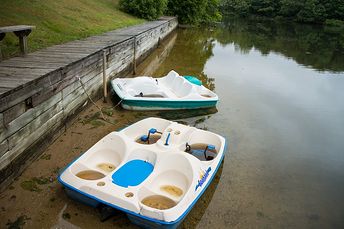
Example 1

Example 2
On the Surface, example 1 had a distinct lack or reds. The wood and sand looked washed out and look more greenish than they do in the PA241W. In example 2 the blues on the blue building had a distinctly greenish tinge. Also, the roof shingles looked more greenish than they looked on the PA241W.
I also downloaded the Digital Outback Photo Printer Evaluation Image. This didn't look too bad on the Surface. There was some posterization and banding in the very dark grays of the gray gradient and the gray gradient wasn't entirely neutral. I could detect the lack of red saturation and there was a greenish tinge to the image of (what looks like) cracked bands of rubber that is in the low right corner (just above the long gray gradient.) But overall the image looked pretty good and didn't exhibit any of the flaws that were pointed out in the DOP "Using the Printer Evaluation Image" article. (Granted the image was designed to test printers but most of the same points apply to monitors. We don't want banding in gradients. We want neutrals to be neutral, etc.)
I had calibrated and profiled it with an XRite i1Display Pro using the most recent version of XRite iProfilier. Enabling ADC (Automatic Digital Control) in iProfilier caused it to crash, so I disabled ADC. The brightness of the Surface is set at the factory default of 50%.
Here are screen shots from my 2nd iProfilier session (I did the calibration twice, several days apart, and got essentially the same result):
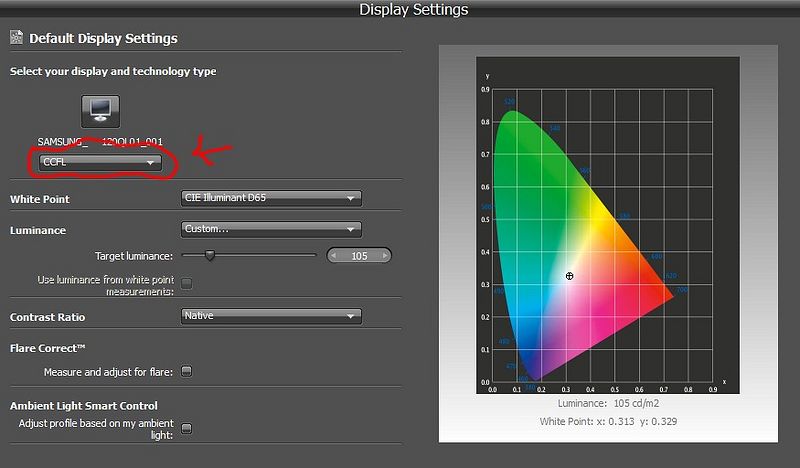
Note the CCFL setting for the monitor background light

I set the ICC profile to be Version 2 (instead of iProfilier's default of Version 4), because the Argyll programs that I use to generate the above gamut plots choke on ver. 4 profiles.
Also, I tried one profile with "Tone Response" set to "sRGB", but that made gradients be horribly posterized, so I quickly set it back to "Standard (default)" and reprofiled.
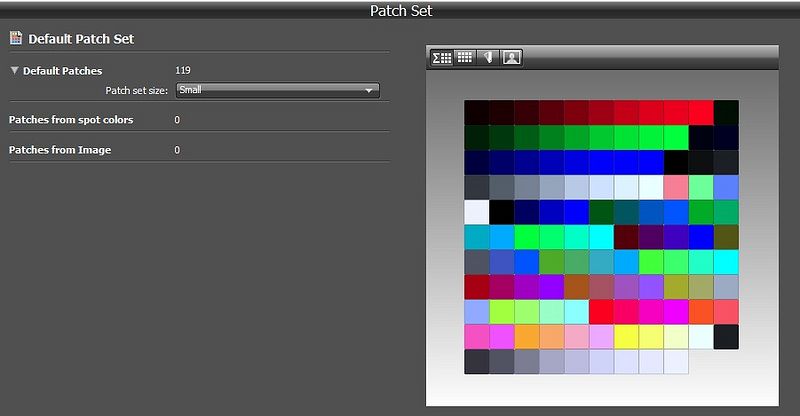
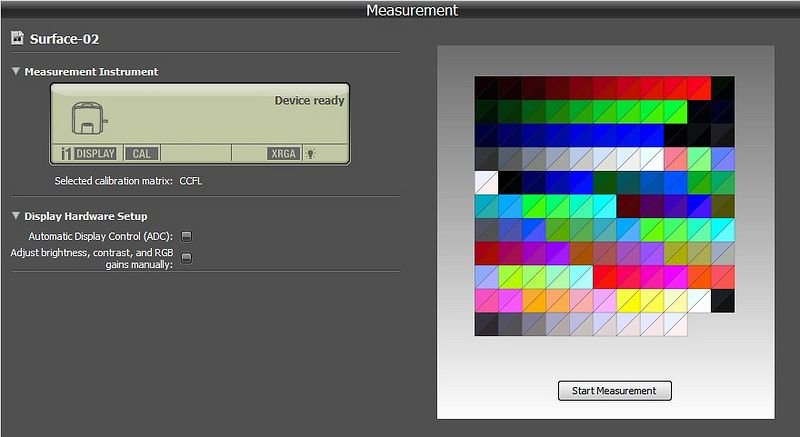
Probing for "ADC" makes iProfilier crash on the Surface, so I unchecked this box.
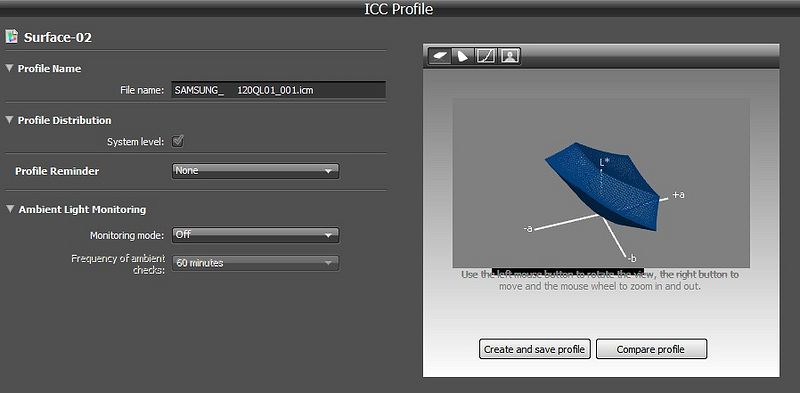
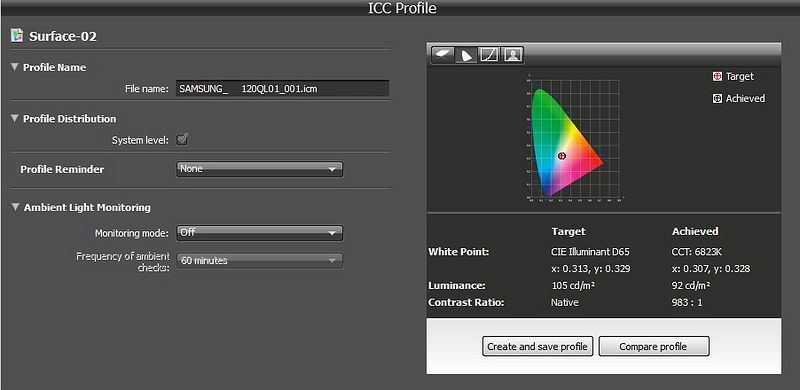
The factory default screen brightness of 50% yields a luminance of 92 cd/m2.
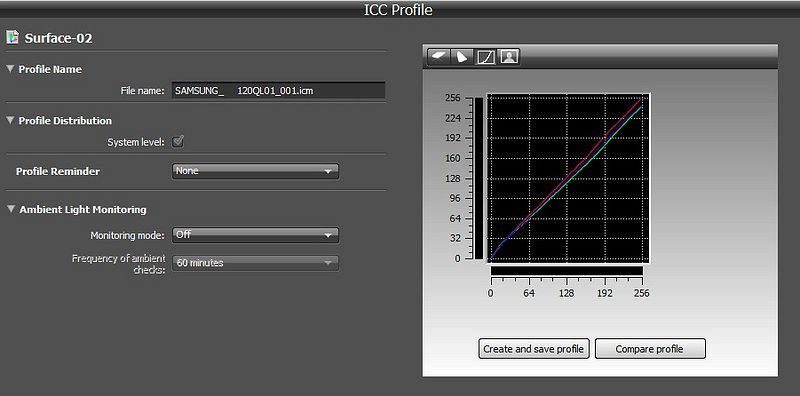
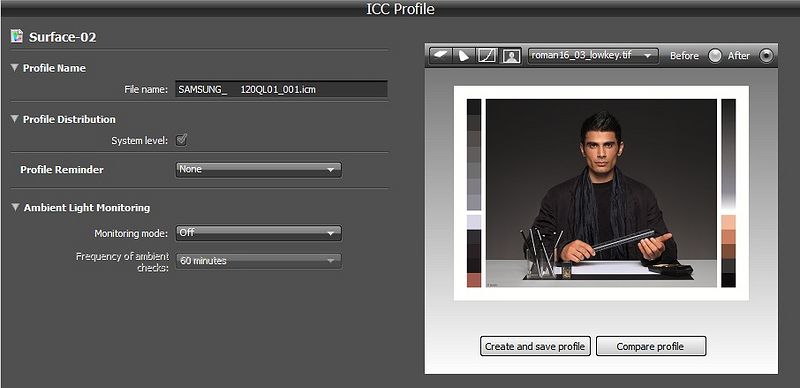
This was my first pass. After a suggestion from this post I reprofiled using White LED
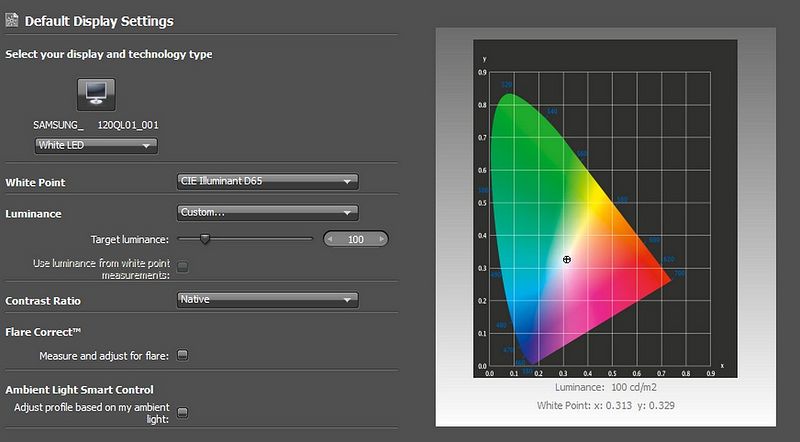
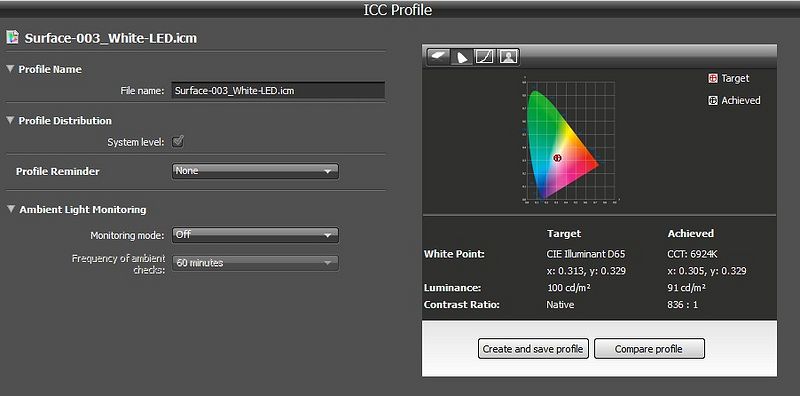
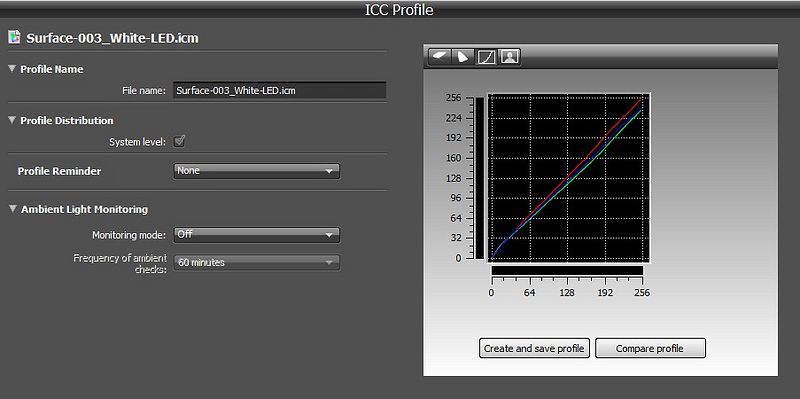
and again using RGB LED for the monitor background light.
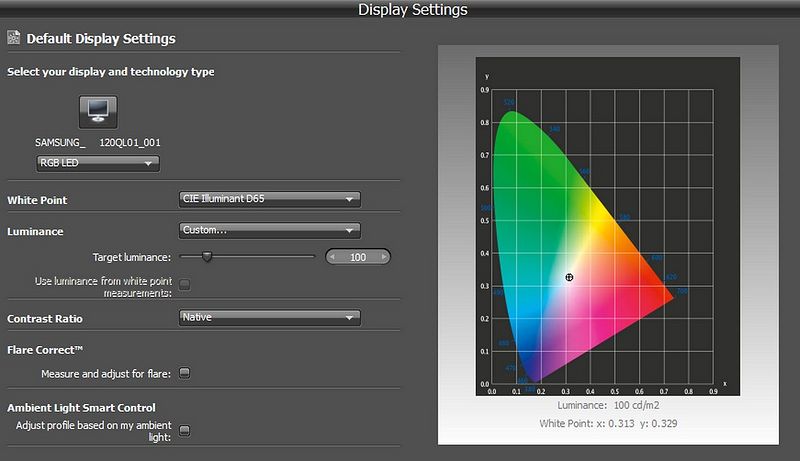
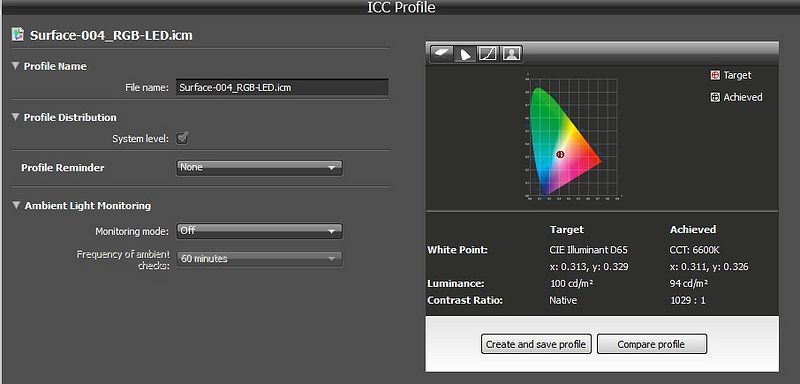
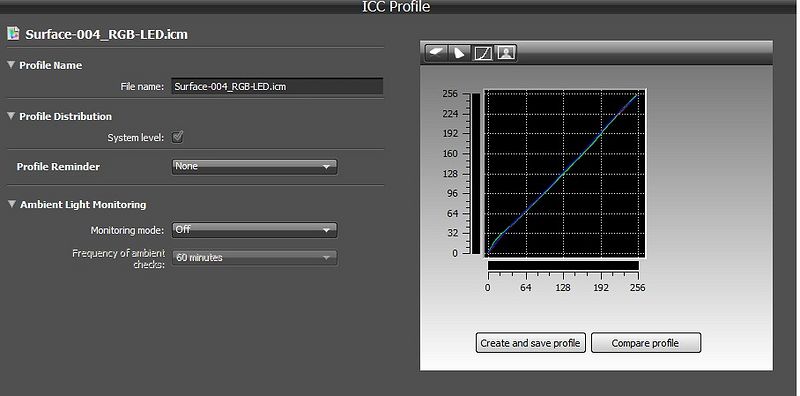
After each calibration I looked at the example images in Photoshop. I found that the one done with "White LED" backlight looked somewhat better than my previous "CCFL" calibrations. I didn't get the red saturation I was looking for but the blues in example 2 didn't look as sickly green as they did with my CCFL profile. The "RGB LED" profile was distinctly different (look at the curves in the above iProfilier screen shots.) I looked at the example images in Photoshop (I took pains to exit Photoshop while doing the calibrations so Photoshop was always using the most recent profile.) The "RGB LED" profile was distinctly worse so I didn't spend much time with it. I reprofiled again with "White LED" backlight and got essentially the same results as I got the first time I profiled with "White LED".
The Digital Outback Photo Printer Evaluation Image also looked a bit better. There was less banding and posterization in the dark part of the gray gradient and I think there was a minor bit less green color cast.
I got advice on the LL thread that told me that I was expecting too much to expect that a screen on a device like the Surface would exactly match a high end monitor like the NEC PA241W. Even if the Surface's gamut measured close to sRGB. However, the last calibration (set to "White LED" backlight brought it closer to matching.